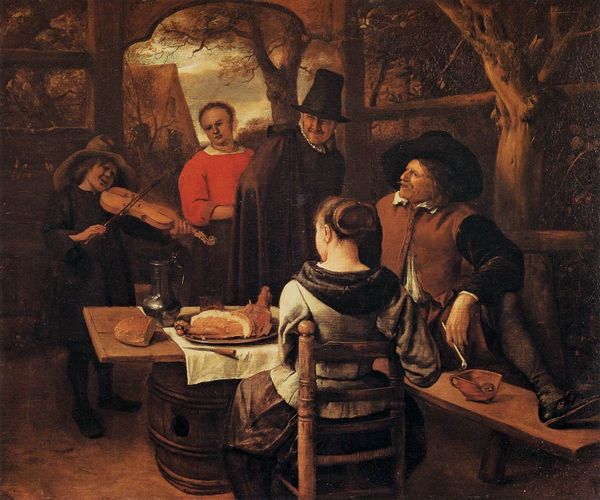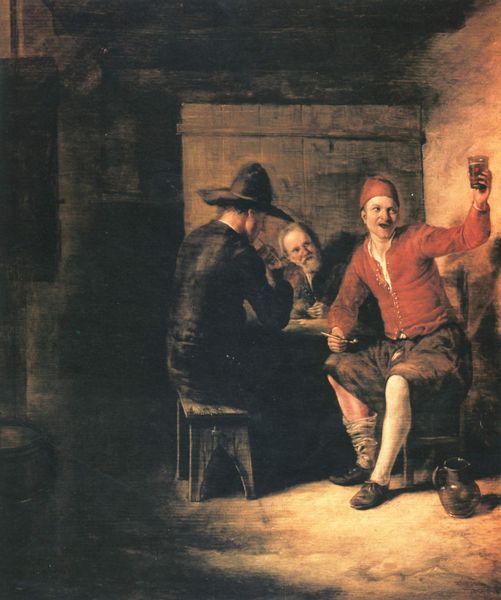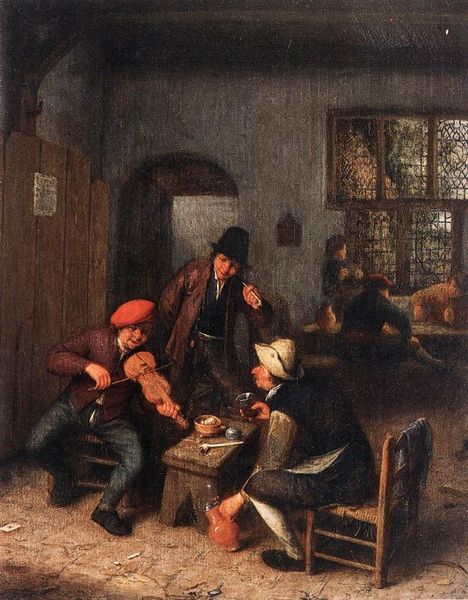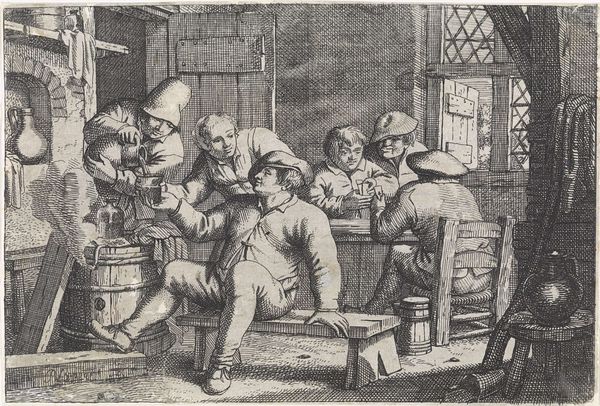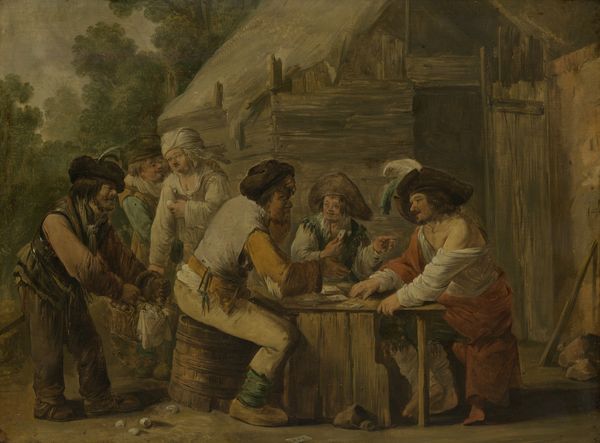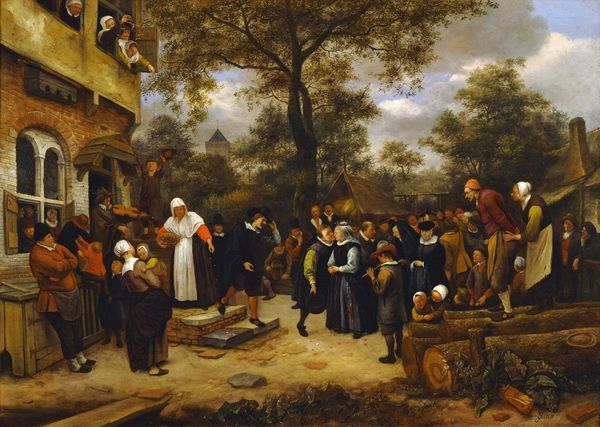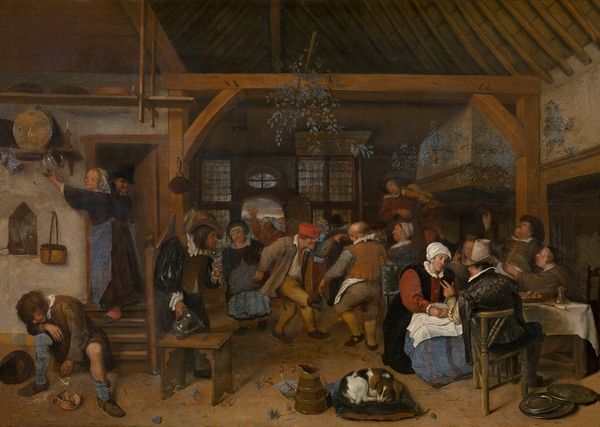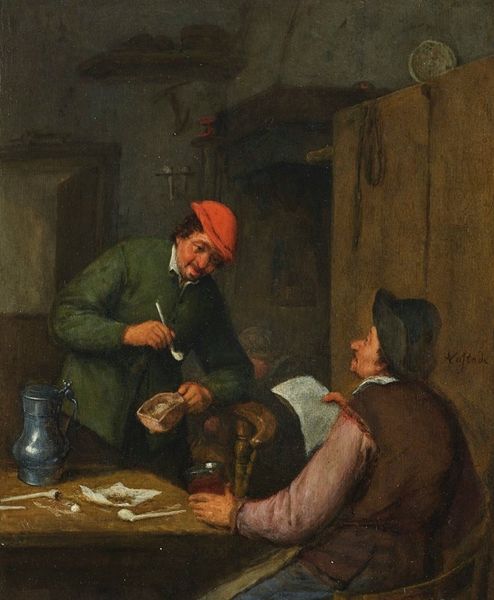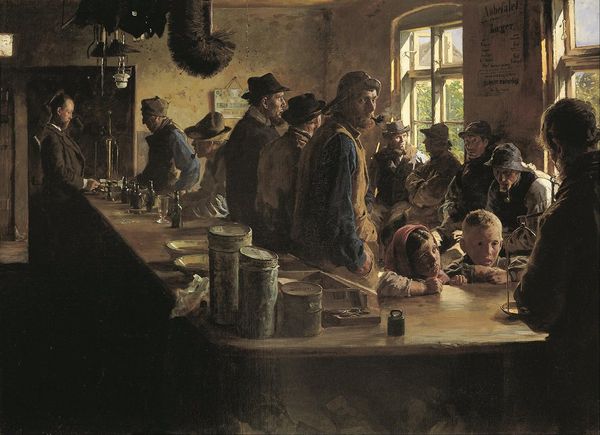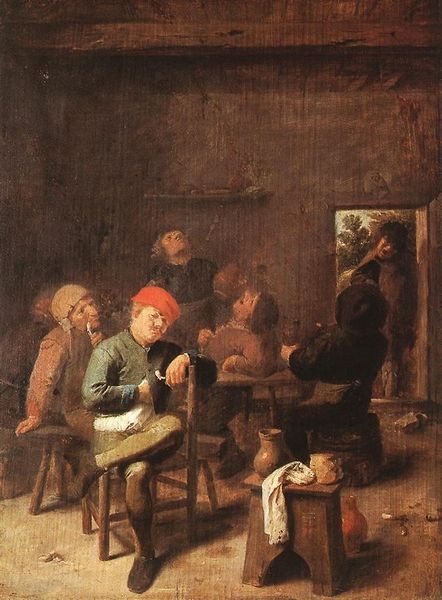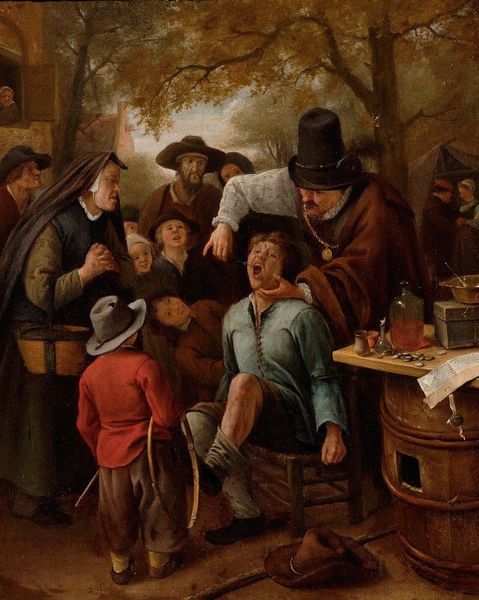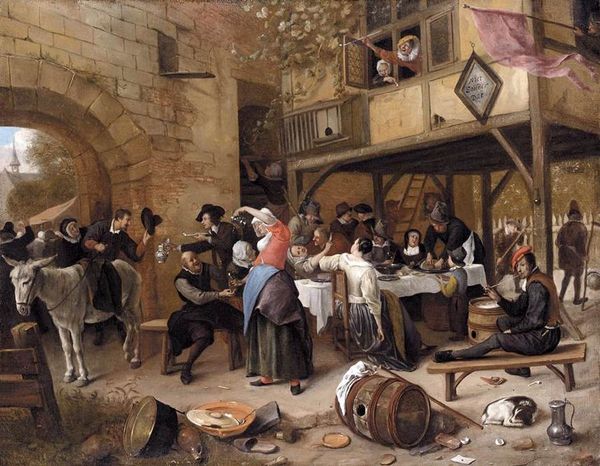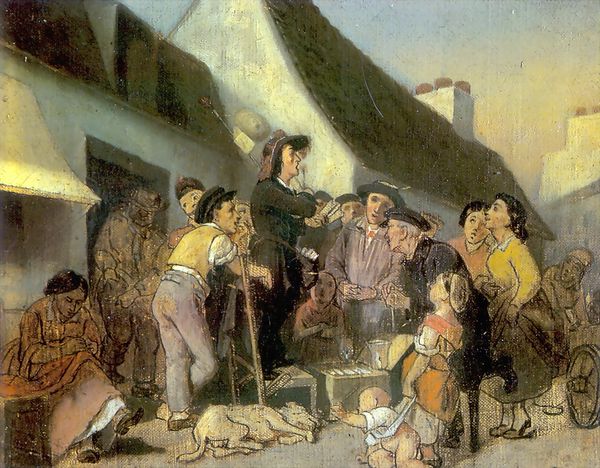
painting, oil-paint
#
narrative-art
#
dutch-golden-age
#
painting
#
oil-paint
#
landscape
#
figuration
#
oil painting
#
genre-painting
Dimensions: height 27 cm, width 22 cm, depth 6.5 cm
Copyright: Rijks Museum: Open Domain
Jan Steen made this oil on panel painting, The Quack, sometime in the 17th century. It depicts a scene of dubious medical practice, ripe with social commentary. The image presents a traveling salesman, a ‘quack,’ peddling his wares to a crowd of hopeful, or perhaps gullible, onlookers. Steen, working in the Dutch Republic, critiques the era’s unregulated medical marketplace, where charlatans could easily exploit the vulnerable. Look at the way the artist employs visual cues. The quack’s flamboyant attire and exaggerated gestures contrast sharply with the simple clothing of his audience, suggesting a social critique of those who profit from deception. The setting, an outdoor gathering, further emphasizes the lack of institutional oversight during this period. To understand Steen’s work, we must turn to contemporary sources: medical pamphlets, legal documents, and social histories of the Dutch Golden Age. These resources reveal the complex interplay between commerce, public health, and social satire in 17th-century Dutch art. Ultimately, the meaning of ‘The Quack’ is contingent upon its socio-historical context.
Comments
No comments
Be the first to comment and join the conversation on the ultimate creative platform.
